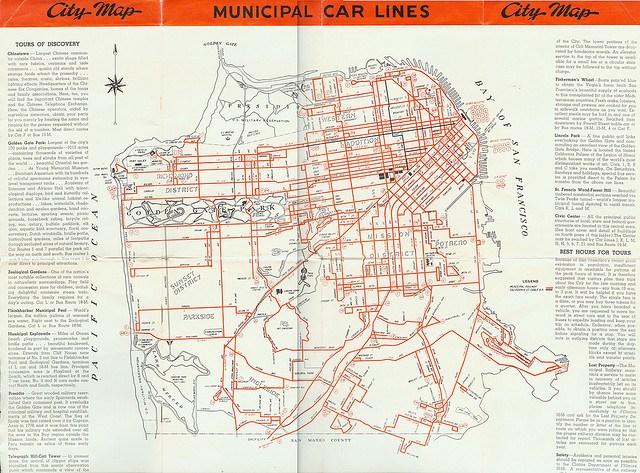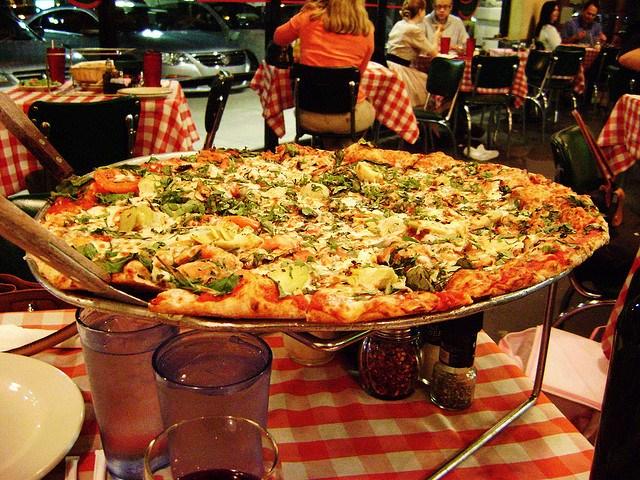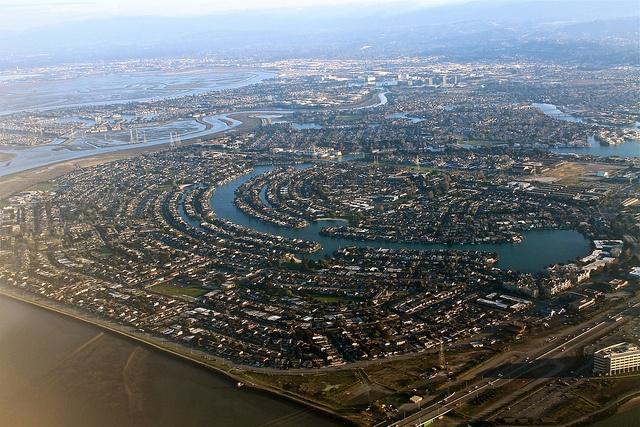Corporate social responsibility (CSR) is steadily moving from a "nice-to-have" to a business imperative. U.S. and U.K. companies in the Fortune Global 500 now spend $15.2 billion a year on CSR initiatives. And as investors continue their calls for non-financial disclosures and consumers ask for more information about the products they buy, CSR is only gaining in importance.
But there's another crucial figure that sheds light on how companies are approaching CSR: In the U.S., in-kind donations, such as giving away free products to nonprofits, accounted for 71 percent of companies' CSR spending, reports the Financial Times. Cash donations tack on another 16 percent, with employee giving and volunteering making up the remaining 13 percent.
Notice a pattern here? Giving away cash or material goods like food, blankets, education software or prescription drugs is surely admirable. But many companies assume that simply by engaging in philanthropic efforts, they've met their social responsibility. They can make charts for their CSR reports; their executives can show up to shareholder meetings with some great stats; and they can communicate their shining 'success stories' to consumers via social media. But there's another vital component of CSR that's sometimes missing in this approach -- community engagement.
Yes, even companies that cut greenhouse gas emissions and water, give away cash, and generally consider themselves to be good corporate citizens often ignore community engagement in their CSR practices.
The San Francisco Bay Area, which has ballooned in both wealth and population since the influx of large tech companies, is a microcosm of the effects this missing link can have on communities around the world.
CSR in the Bay Area
The large tech companies that call the Bay Area home (think: Google, Apple, Facebook and Twitter) are generally ahead of the pack when it comes to innovation. This often includes CSR, with Google
stirring up air-pollution management and
constructing the largest solar power plant in Africa, and Apple
jumping aboard climate pledges and
making big commitments on sustainable forestry.
Along with innovation on the technology front, these firms take a new -- and decidedly modern -- approach to corporate culture. It makes sense really: These companies are competing for the best and brightest talent, so they want to encourage employees to pick their firm and stick with it. So, rather than a boring row of cubicles and a yearly holiday party, large tech firms construct sprawling office parks and craft cultures more akin to college campuses than a scene from "Office Space."
This is all well and good (after all, who wouldn't want to work in an office with a gym, 24-hour cafes, laundromats and game rooms?). But on their quest to create a team mentality that rivals the parking lot before the big game, some large tech firms have isolated their employees from the already-established communities around them. This only underscores these companies' focus on macro issues like climate change and deforestation in their CSR -- and their perceived neglect of community engagement.
As companies continue to pressure Bay Area communities to build new office parks, they often fail to lobby for housing and transportation options to go along with it, placing a strain on local infrastructure. Additionally, more highly-paid residents means more shops, restaurants and trendy coffee bars — all staffed by employees who are quickly being priced out of the area. This perfect storm creates a heap of problems for Bay Area residents -- as well as significant opportunities for government and the private sector to collaborate on solutions.
Housing in a zoning-constrained region
On average, rent prices in the Bay Area have increased by 15 percent since 2014, while salaries have risen by just 2 percent. In neighborhoods like Berkeley, Oakland and Emeryville, traditionally home to middle- and lower-income residents, rent has climbed by an average of 26 percent in the past year alone.
In short, residents of all economic levels are feeling the pinch. Even families doing fairly well for themselves can become quickly priced out of their neighborhoods as rent prices dwarf salary increases, even for white-collar workers. But, of course, thanks to income inequality -- another pressing global problem that finds a case study in the Bay Area -- lower-income folks are the hardest hit.
For an example, let's look at East Palo Alto, a small city directly abutting Facebook's fancy home in Menlo Park that houses mostly working-class people of color. In a recent housing report, the city noted that it is "very concerned" about promoting more affordable housing, "particularly in light of rapid increases in prices." Right now, despite skyrocketing rents and stagnant earnings, the city only offers 80 affordable housing units. It admits this often leads residents to share apartments, causing "overcrowding and associated problems."
What does all of this have to do with big tech companies? It's fairly simple: As these firms expand their staff and pressure communities for more space to build office parks, they rarely build housing for their employees or work with surrounding communities on plans for increased housing. Basic math (not to mention musical chairs) dictates that if more people are moving in, and the number of homes remains the same, someone is going to be left out in the cold.
While other West Coast cities solve this problem by simply building out -- a quick look at sprawling metros like Los Angeles and Phoenix prove that -- this isn't really an option in the Bay Area (nor would many people want it to be). The region sits on a peninsula, meaning space is finite. The entire Bay Area measures around 7,000 square miles, a land mass tasked with accommodating more than 7 million residents and counting. The high-rise solution used by many East Coast cities is also difficult, thanks to building height restrictions, the region's position on a fault line and, in the case of San Francisco, "sunset zoning" aimed at preserving iconic views and neighborhood character.
This all adds up to staggering prices -- and a large volume of former Bay Area residents being left in the dust. While restrictions present significant challenges, the Bay Area's mounting housing crisis is also an ideal opportunity for tech titans to use their penchant for innovation in a way that creates real impact on their communities.
Pressure on freeways and public transportation
The majority of tech campuses are located outside San Francisco, but many tech employees prefer urban life to the suburbs of Silicon Valley. This leads to congested freeways and overtaxed public transportation, as thousands of tech commuters make hour-long journeys to their isolated office complexes. To make matters worse, of the staggering 3 million commuters in the Bay Area, only about 10 percent use public transportation.
It's also worth noting that the Bay Area consists of 101 cities and nine counties. This means, when zoning and urban development proposals pop up, everyone is coming to the table with their own set of needs and demands. This has proven especially problematic when it comes to public transportation. In short: Commuters want more public transit options throughout Silicon Valley. But, in order to make these dreams a reality, tracks must pass through high-real-estate areas often hostile to their expansion.
Residents in these cities often take a NIMBY (not in my backyard) stance, pushing back against expansion of public transit systems due to concerns about noise pollution and unsightliness. Wealthy Santa Clara, for example, refused to allow the expansion of the Bay Area Rapid Transit (BART) train system for many years. As a result, Valley Transportation Authority (VTA) officials were forced to modify their plans: Rather than extending the line directly to San Jose, it will come in indirectly from the east to bypass Santa Clara.
This small example proves what we all already know: Money talks. And constant push-back from wealthy areas has more or less neutered political will to gain more funding for public transit -- despite increasingly congested freeways and outrage from community groups. While tech companies have tried to remedy the issue with solutions like the so-called Google Buses, the need for permanent and inclusive solutions remains -- and innovations in public transit present yet another golden opportunity for tech firms to use their disruptive prowess for good.
A rapidly expanding service economy
While tech company head-counts explode, service economy outfits like restaurants, bars, supermarkets, pharmacies, dry cleaners and coffee shops, as well as support services like landscaping, janitorial and housekeeping staff, come online to meet the daily needs of high-income employees.
While these businesses offer many new jobs, they don’t pay very well. And with the ballooning rent prices in the region, it becomes hard to imagine how minimum-wage employees can manage to keep a roof over their heads and food on the table.
The numbers don’t make the case much better: Although the living wage in the Bay Area is $13.77 for a single adult, the minimum wage is still just $9. A service industry employee can expect to take home around $22,000 a year, while the business and financial operations employees to whom they serve lattes rake in nearly $85,000.
With a noted shortage of affordable housing in the region, many service-industry employees share apartments -- and we're not talking about a standard roommate situation. Often multiple families share two- or three-bedroom dwellings, causing overcrowding problems similar to those noted in East Palo Alto. As rent prices in formerly affordable areas skyrocket, these residents are often pushed farther and farther out to the fringes of the Bay Area -- where few transit options exist to serve them and their commutes to minimum-wage jobs can be nearly two hours each way.
As tech companies strive to engage their own employees and make their lives better, they should equally lobby on the local level to improve the standard of living for the service-economy workers who serve those employees. While it's not standard CSR, action at this level allows companies to serve those less fortunate -- not in some far-off country, but in their own backyards.
3p dives deeper
Clearly, the challenges facing the Bay Area are as bountiful as they are intimidating. As a San Francisco-based company, these issues are near and dear to our hearts here at TriplePundit. That's why, over the next few weeks, we'll explore them in even greater detail.
In an effort to raise awareness and put a human face to these issues, we'll talk take a closer look at what's happening on the community level with respect to housing, transportation and the booming service economy. We'll talk to real Bay Area residents about how they're faring, and explore viable ways tech firms and government can work together to achieve solutions. Our journey will take us from Downtown San Francisco to San Jose, with stops in lesser-known cities like Mountain View, Sunnyvale and Cupertino along the way. If you miss an installment, you can catch them all here.
Image credit: Flickr/Patrick Nouhailler




















